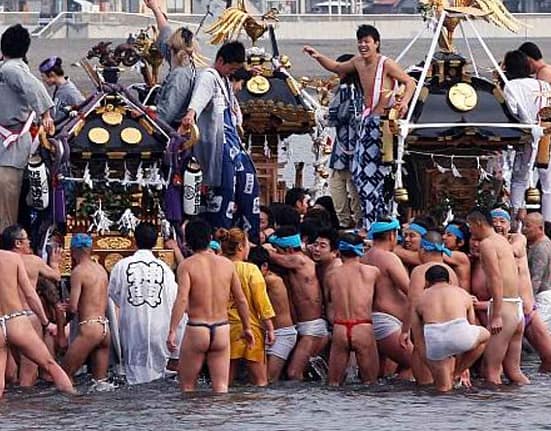Last updated on October 9th, 2024 at 08:27 pm
Ancient China is a rich tapestry of history, culture, and innovation. Here are 50 ancient Chinese history facts that highlight the incredible journey of this ancient civilization.
Early Civilization
1. Emergence of Civilization: Chinese civilization first emerged in the Yellow River valley around 2100 BCE. This area is often referred to as the cradle of Chinese culture.

2. Neolithic Cultures: The Yangshao and Longshan cultures were significant Neolithic societies. They laid the groundwork for later Chinese civilization with their advancements in agriculture and pottery.
3. Shang Dynasty: The Shang dynasty (c. 1600–1046 BCE) is noted for its advanced bronze technology and the earliest known form of Chinese writing. They used oracle bones for divination, marking a pivotal moment in Chinese history.

Dynasties and Governance
4. Zhou Dynasty: The Zhou dynasty (c. 1046–256 BCE) introduced the Mandate of Heaven. This concept justified a ruler’s authority and shaped political thought in China for centuries.

5. Qin Dynasty: The Qin dynasty (221–206 BCE) is famous for unifying China. They standardized weights, measures, and even the written script, which improved communication.
6. Han Dynasty: The Han dynasty (206 BCE–220 CE) is often considered a golden age for China. This period saw significant advancements in technology, culture, and trade along the Silk Road.
Cultural Contributions
7. Invention of Paper: The invention of paper is attributed to Cai Lun during the Han dynasty, around 105 CE. This innovation revolutionized communication and record-keeping.
8. Silk Production: The production of silk began during the Shang dynasty. It became a major trade commodity along the Silk Road, influencing fashion worldwide.

9. Confucianism: Founded by Confucius in the 5th century BCE, Confucianism emphasizes morality, social relationships, and justice. It deeply influenced Chinese society and governance.
Philosophy and Religion
10. Daoism: Daoism, founded by Laozi, promotes living in harmony with the Dao, or the fundamental nature of the universe. This philosophy encourages simplicity and connection to nature.
11. Buddhism’s Arrival: Buddhism was introduced to China from India during the Han dynasty (around 1st century CE). It significantly influenced Chinese culture, art, and philosophy.
12. Legalism: Legalism emphasized strict laws and harsh punishments, becoming a key philosophy during the Qin dynasty. It aimed to maintain order and control over society.
Innovations and Technology
13. The Compass: The earliest form of the compass was developed in ancient China around the 4th century BCE. This invention greatly aided navigation for trade and exploration.
14. Gunpowder: Gunpowder was invented during the Tang dynasty (618–907 CE). It later transformed warfare and led to new military strategies.

15. Printing Technology: The invention of woodblock printing during the Tang dynasty allowed for mass production of texts. This innovation made literature more accessible to the public.
Art and Literature
16. Chinese Calligraphy: Calligraphy is considered a high art form in China. Its roots trace back to the Shang dynasty, where it was used in religious texts.

17. Poetry: The Tang dynasty is renowned for its poetry. Poets like Li Bai and Du Fu achieved great acclaim for their works, which are still celebrated today.
18. The Four Great Inventions: These include the compass, gunpowder, papermaking, and printing. Each invention significantly impacted not only China but the entire world.
Society and Daily Life
19. Social Hierarchy: Ancient Chinese society was structured hierarchically. The emperor sat at the top, followed by nobles, peasants, and merchants.
20. Foot Binding: This practice began in the Song dynasty (960–1279 CE) and was a symbol of beauty among women. It involved tightly binding a girl’s feet to alter their shape.
21. Family Structure: The family was the central unit of society in ancient China. There was a strong emphasis on filial piety, or respect for one’s parents and ancestors.
Trade and Economy
22. Silk Road: The Silk Road was a network of trade routes connecting China to the West. It facilitated cultural exchange and economic growth from around 130 BCE onwards.

23. Agricultural Advances: Innovations such as the iron plow and crop rotation improved agricultural productivity. These advancements helped sustain large populations.
24. Tea Cultivation: Tea was cultivated in China as early as the Shang dynasty (c. 1600–1046 BCE). It became a staple beverage that continues to be popular worldwide today.
Warfare and Military
25. Great Wall of China: The construction of the Great Wall of China began during the Qin dynasty to protect against invasions from northern tribes. Its construction continued for centuries.
26. Terracotta Army: The Terracotta Army, built to accompany Emperor Qin Shi Huang, showcases ancient Chinese artistry. Discovered in 1974, it consists of thousands of life-sized figures.
27. Military Strategies: The ancient text The Art of War, written by Sun Tzu, is a foundational work on military strategy. It has influenced military thinking around the world.
Science and Medicine
28. Traditional Chinese Medicine: This system includes practices like acupuncture and herbal remedies. It has roots in ancient practices dating back thousands of years.

29. Astronomy: Ancient Chinese astronomers made significant contributions to astronomy. They developed calendars based on lunar cycles around 2000 BCE.
30. Mathematics: Ancient Chinese mathematicians developed a decimal system around 500 BCE. They made advances in geometry that laid groundwork for future mathematical explorations.
Read Also: 50 Traditional Chinese Clothing Facts
Architecture and Engineering
31. Pagodas: These multi-tiered towers originated from ancient Chinese architecture around the Han dynasty (206 BCE–220 CE). They were often used in religious contexts.

32. Grand Canal: Built during the Sui dynasty, the Grand Canal, completed in 609 CE, is the longest canal in the world. It facilitated trade between northern and southern China.
33. City Planning: Ancient Chinese cities were often laid out in a grid pattern, reflecting cosmological beliefs. This planning showcased an understanding of harmony within urban spaces.
Notable Figures
34. Emperor Qin Shi Huang: The first emperor of a unified China, known for his authoritarian rule and monumental projects like the Great Wall, reigned from 221-210 BCE.
35. Confucius: A philosopher whose teachings on ethics and governance have influenced Chinese society for centuries. He lived from 551-479 BCE.

36. Zhuangzi: An influential Daoist philosopher known for his writings that explore reality’s nature. His contributions date back to around the 4th century BCE.
Historical Events
37. Warring States Period: This era (475–221 BCE) was marked by fragmentation among various states before unification under Qin Shi Huang. It was characterized by warfare and strategic alliances.
38. Cultural Revolution: Although not ancient, this event in the 20th century had roots in ancient ideologies that impacted modern Chinese society, particularly Confucian values.
39. Opium Wars: These conflicts in the 19th century were influenced by historical trade practices, including tea and silk trade that were vital to China’s economy.
Language and Writing
40. Chinese Characters: The writing system uses logograms that have evolved over thousands of years. Each character represents a word or idea rather than a sound.

41. Oracle Bones: These artifacts from the Shang dynasty were used for divination around 1200 BCE. They are among the earliest forms of Chinese writing discovered.
42. Literary Classics: Works like the I Ching, an ancient divination text, and the Book of Songs, a collection of poetry, are foundational texts in Chinese literature.
Influence on the World
43. Cultural Exchange: Ancient China significantly influenced neighboring cultures such as Korea and Japan through trade, philosophy, and religion over many centuries.
44. Philosophical Impact: Confucianism and Daoism have shaped not only Chinese thought but also global philosophical discourse since their inception over two millennia ago.
45. Artistic Influence: Chinese art, particularly in painting and ceramics, has had a lasting impact on global art traditions since ancient times, inspiring countless artists worldwide.
Read Also: 50 Interesting Facts About China
Miscellaneous Facts
46. The Color Red: In ancient China, red was considered a symbol of good fortune and happiness. It remains important in celebrations today.
47. The Dragon: The dragon is a significant symbol in Chinese culture, representing power, strength, and authority throughout history.

48. The Number Eight: This number is considered lucky in Chinese culture, often associated with prosperity and wealth due to its phonetic similarity to the word for wealth.
49. Tea Ceremony: The tradition of tea drinking has deep cultural significance in China, symbolizing harmony and respect during social gatherings.
50. Cultural Festivals: Festivals like the Chinese New Year, which celebrates new beginnings, and the Mid-Autumn Festival, which honors family reunions, have ancient origins celebrated widely today.
Ancient China’s rich history is filled with remarkable achievements, philosophies, and traditions that continue to influence our world today. Understanding these ancient China history facts helps us appreciate this complex civilization’s legacy better.











